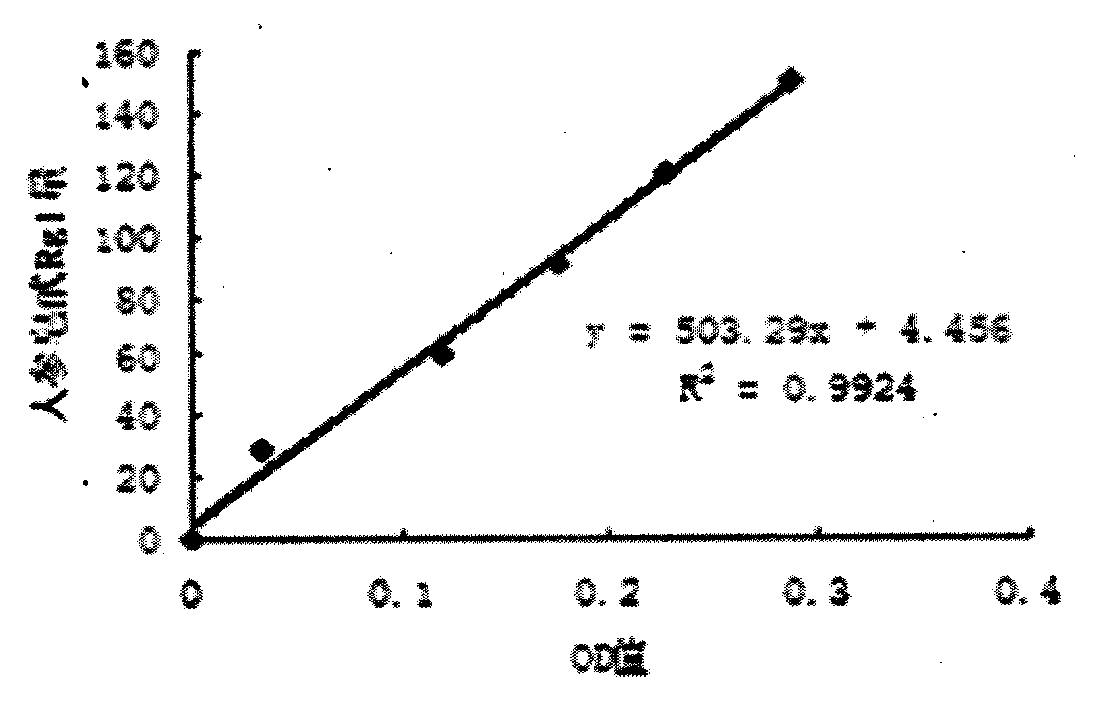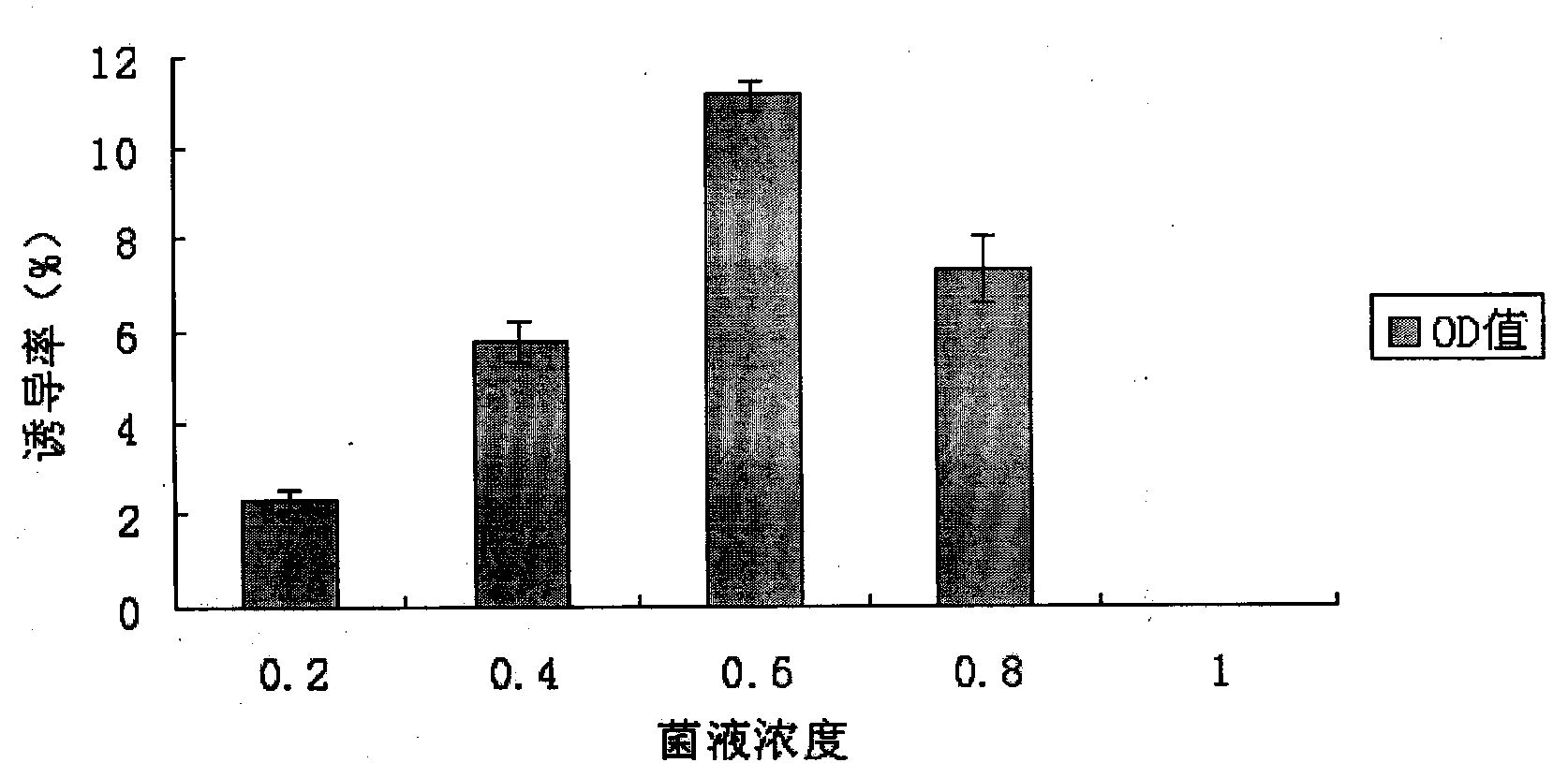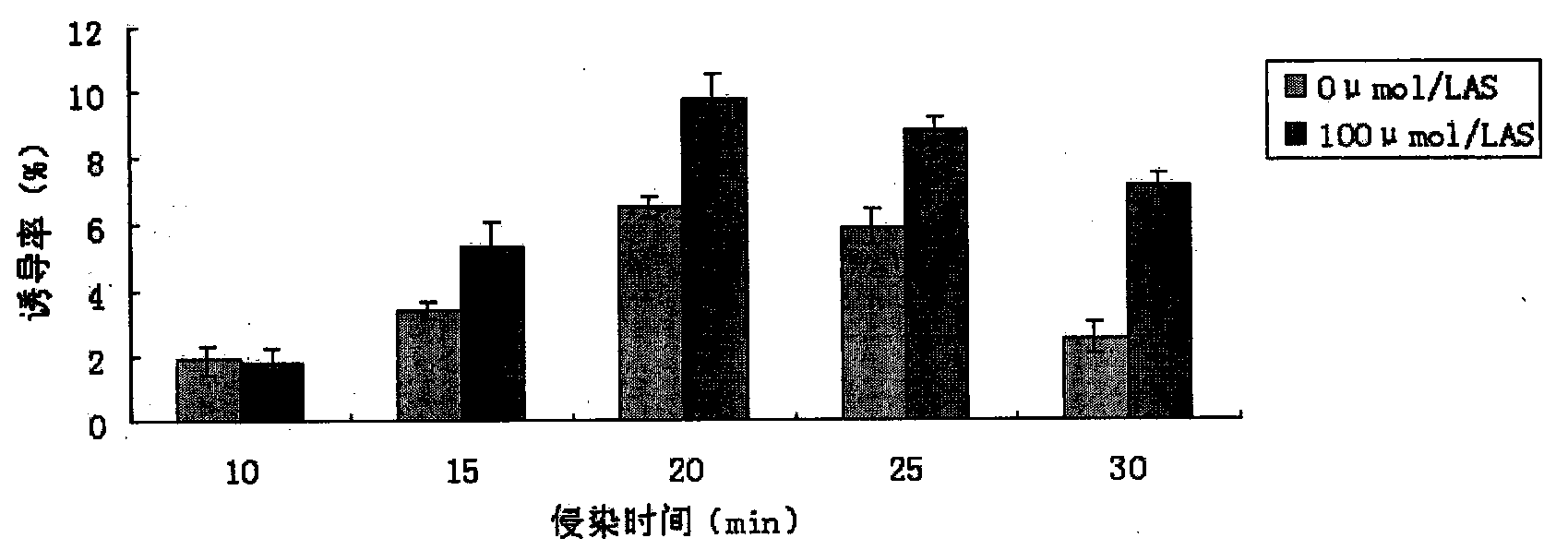Research method for American ginseng hairy root induction and plant regeneration
A technology of American ginseng and hairy roots, applied in the field of hairy root induction and plant regeneration research of American ginseng, can solve the problems of difficult root differentiation, few roots, weak growth ability and the like
- Summary
- Abstract
- Description
- Claims
- Application Information
AI Technical Summary
Problems solved by technology
Method used
Image
Examples
Embodiment 1
[0098] Embodiment 1: the optimization of the induction condition of American ginseng hairy root
[0099] (1) Effects of different strains on the induction rate of American ginseng hairy roots: In the examples, four strains of R1601, 8196, A4, and rolA were selected to infect American ginseng seedling tissue sections of 2 to 3 weeks seedling age, and the effects of different strains on American ginseng were investigated. The effect of hairy root induction rate is shown in Table 1.
[0100] Table 1 Effects of different bacterial species on the induction rate of American ginseng hairy roots
[0101]
[0102] There are great differences in the pathogenicity of different Agrobacterium rhizogenes strains. The 2-3 week-old American ginseng seedlings infected by Agrobacterium rhizogenes R1601 have white particles at the incision on the 20th day of infection Tissue appeared, some granular tissue appeared in the browned part of the wound, and some granular tissue appeared on the enl...
Embodiment 2
[0130] Example 2: Acquisition and identification of American ginseng hairy roots
[0131] (1) Obtaining American ginseng hairy roots: the co-cultivated materials were rinsed with 500 mg / L cephalosporin (Cef) aqueous solution for 3 to 5 times, the surface of the materials was blotted with sterile filter paper, and then the materials were connected to Bacteria-free culture was carried out on MS solid medium of L cephalosporin (Cef). The medium was replaced once a week, and after 5 to 6 weeks, the material was transferred to MS solid medium without antibiotics to continue culturing. In this example, the earliest occurrence of American ginseng hairy roots is about 30 days after infection (Condition: OD600=0.6, seedslings with stem explants, preconditioning time=48h, AS100 μmol / L). Hairy roots appear at the wound, and several or even dozens of hairy roots can be produced on a piece of explant material, while some explant materials first dedifferentiate to produce loose callus, and...
Embodiment 3
[0133] (3) Dynamic curves of American ginseng hairy root growth and saponin content: under liquid culture conditions, American ginseng hairy root growth and total saponin content curves basically conform to the "S" type (see Figure 10 ). After a short lag period, the growth of American ginseng hairy roots began to enter the logarithmic growth phase on the 9th day, and reached the highest growth on the 27th day, and almost stopped growing after the 27th day, and the dry weight basically did not increase. The content of total saponins increased with the growth of hairy roots, and the total saponins content also reached the maximum on the 27th day, and then the yield began to decline gradually. Example 3: Induction of American Ginseng Hairy Root Callus (1) Effects of Different Growth Regulating Substances on American Ginseng Hairy Root Callus: The analysis of the induction rate of American ginseng hairy root callus is shown in Table 9 and Table 10. According to the order of ext...
PUM
 Login to View More
Login to View More Abstract
Description
Claims
Application Information
 Login to View More
Login to View More - R&D
- Intellectual Property
- Life Sciences
- Materials
- Tech Scout
- Unparalleled Data Quality
- Higher Quality Content
- 60% Fewer Hallucinations
Browse by: Latest US Patents, China's latest patents, Technical Efficacy Thesaurus, Application Domain, Technology Topic, Popular Technical Reports.
© 2025 PatSnap. All rights reserved.Legal|Privacy policy|Modern Slavery Act Transparency Statement|Sitemap|About US| Contact US: help@patsnap.com



